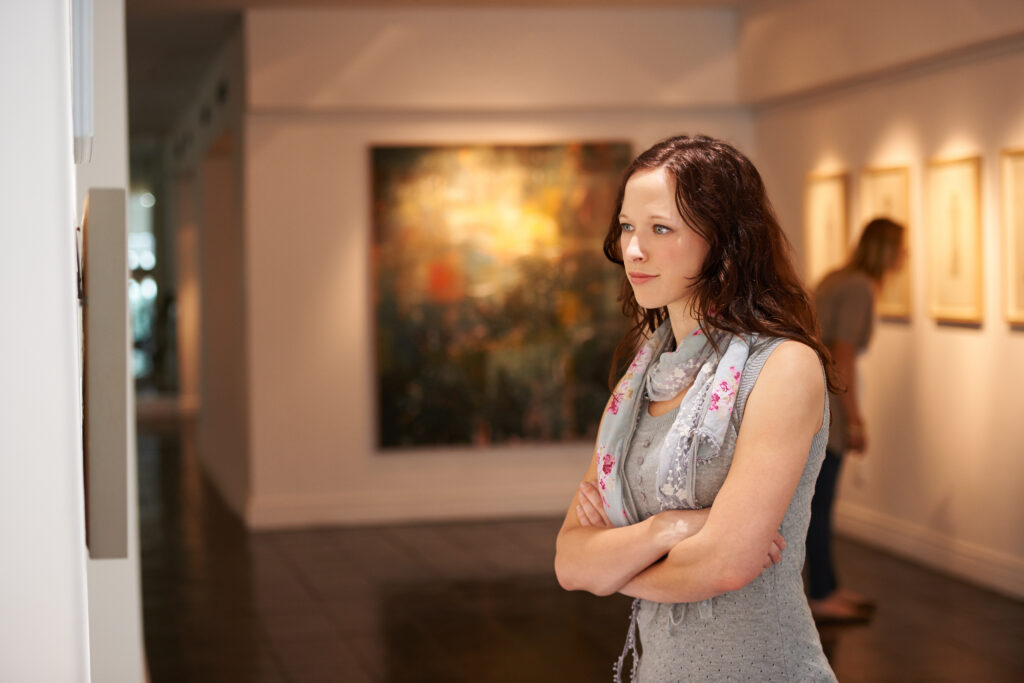Have you ever felt inspired or calmed after visiting an art gallery? You’re not alone – and now science backs it up. Research shows that the simple act of looking at visual art can significantly improve your well-being, phys.org. Art appreciation is more than a leisure activity – it’s emerging as a powerful, low-cost way to support mental health and add meaning to your life.
The Science Behind Art and Well-Being
In 2025, psychologists analyzed 38 studies involving 6,805 participants to understand art’s impact on wellness. Their review, published in The Journal of Positive Psychology, found that viewing art boosts eudaimonic well-being – the kind of well-being tied to meaning and personal growth. In other words, engaging with paintings, sculptures, or photographs can make life feel more worthwhile and fulfilling. Notably, the researchers identified several ways art may achieve these benefits – by engaging our emotions, sparking intellectual curiosity, providing social connection, and even helping us reframe our sense of self – all of which can build resilience and fulfillment neurosciencenews.com.

As one expert noted, visual art can “satisfy people’s need to search for meaning in life” and help build self-esteem and a positive identity – important factors for coping with life’s challenges. Far from being a luxury, art is increasingly seen as an accessible well-being resource. “People often think of art as a luxury, but our research suggests that viewing art – whether as a hobby or as a targeted health intervention – can meaningfully support wellbeing,” says lead researcher MacKenzie Trupp, emphasizing that reframing art as a low-cost, everyday wellness resource opens possibilities to integrate it into daily life and public health strategies iheem.org.uk.
Art as Stress Relief and Health Booster
Beyond enriching our sense of purpose, art also has immediate benefits for our bodies and minds. Viewing art has been shown to reduce stress and even produce measurable health improvements. For example, one experiment found that people who spent 20 minutes with real paintings saw their cortisol (stress hormone) drop by about 22%, whereas those who viewed only copies had a much smaller change, theguardian.com. The same study showed that inflammatory markers related to stress also plummeted in the gallery group. These physiological changes suggest that art doesn’t just make us feel good – it literally calms our biology.
Health experts are excited by these findings. Dr. Tony Woods of King’s College London noted that stress hormones and inflammatory markers are tied to many health problems, and lowering them through art indicates “cultural experiences may play a real role in protecting both mind and body” theguardian.com. Impressively, art can even trigger positive responses across multiple body systems at once. “Art doesn’t just move us emotionally – it calms the body too,” Woods explains.
Numerous other studies back up art’s stress-relieving power. In a 2021 review of art and stress, almost every study reported reductions in stress or anxiety after people viewed art, along with lower blood pressure or heart rate in many cases. Simply put, looking at art helps us relax. Interestingly, that review found art featuring natural scenes was especially soothing for viewers auckland.ac.nz – suggesting that a tranquil landscape painting in a hospital or office can help ease tension.
Bringing Art into Your Life for Well-being
The encouraging news is that you don’t have to be an art aficionado to benefit. Researchers emphasize that these positive effects of art are for everyone. “The findings show these benefits are universal – they can be experienced by anyone,” says Jenny Waldman of Art Fund, theguardian.com. So how can you harness art’s mood-boosting, meaning-making power in your own life? Here are a few ideas:

- Visit galleries or museums when you can: Even occasional art outings can have benefits. One long-term study found that older adults who engaged in cultural activities (like museum visits) even once or twice a year lived longer than those who never did ucl.ac.uk. Make a plan to wander a local museum or art fair and pay attention to how you feel afterward.
- Surround yourself with art: Bring art into your home or workspace. Any painting, photograph, or print that you find beautiful or inspiring can lift your mood when you look at it.
- Try art virtually: Can’t get to a gallery? Explore art online. Many museums offer virtual tours, and countless artworks can be viewed in online collections. Even digital art viewing or virtual reality art experiences can boost well-being. Take five minutes to browse an online gallery or a library of paintings.
Embracing the Art of Well-Being
From finding meaning to lowering stress, art viewing offers a remarkable way to enrich your life. It’s amazing that something so enjoyable can also nurture your mind and body. Health organizations are taking note – the World Health Organization now recommends arts in healthcare, and doctors are even exploring “art prescriptions” (museum visits for therapy).
You don’t need to wait for a prescription. Next time you can visit a gallery, enjoy public art, or pause to appreciate a favorite painting. As studies show, making art appreciation a regular part of your life can brighten your mood, reduce stress, and even help you find greater purpose phys.orgtheguardian.com. In short, viewing art is more than a pastime – it’s a simple, inspiring habit that can make your life healthier and more meaningful.





